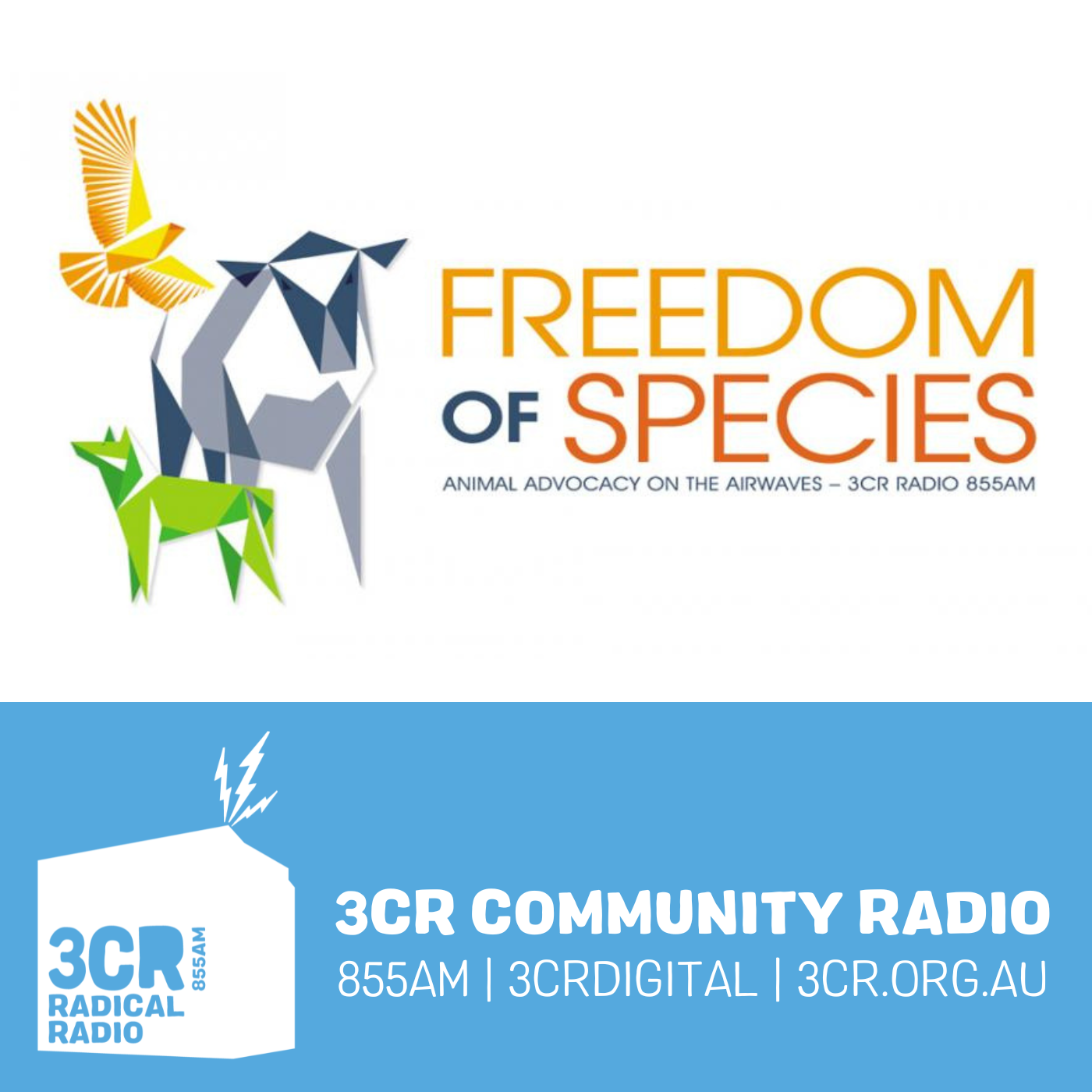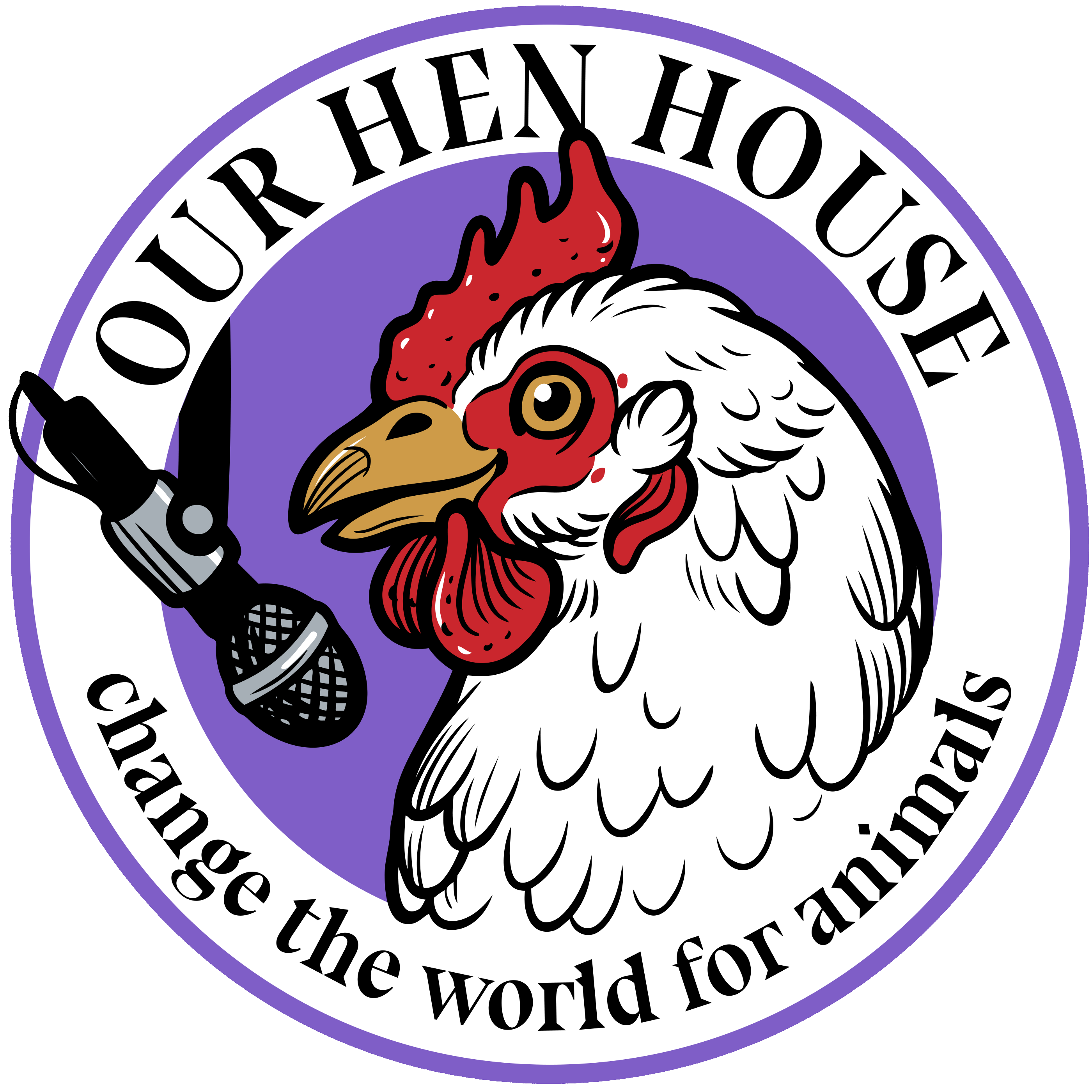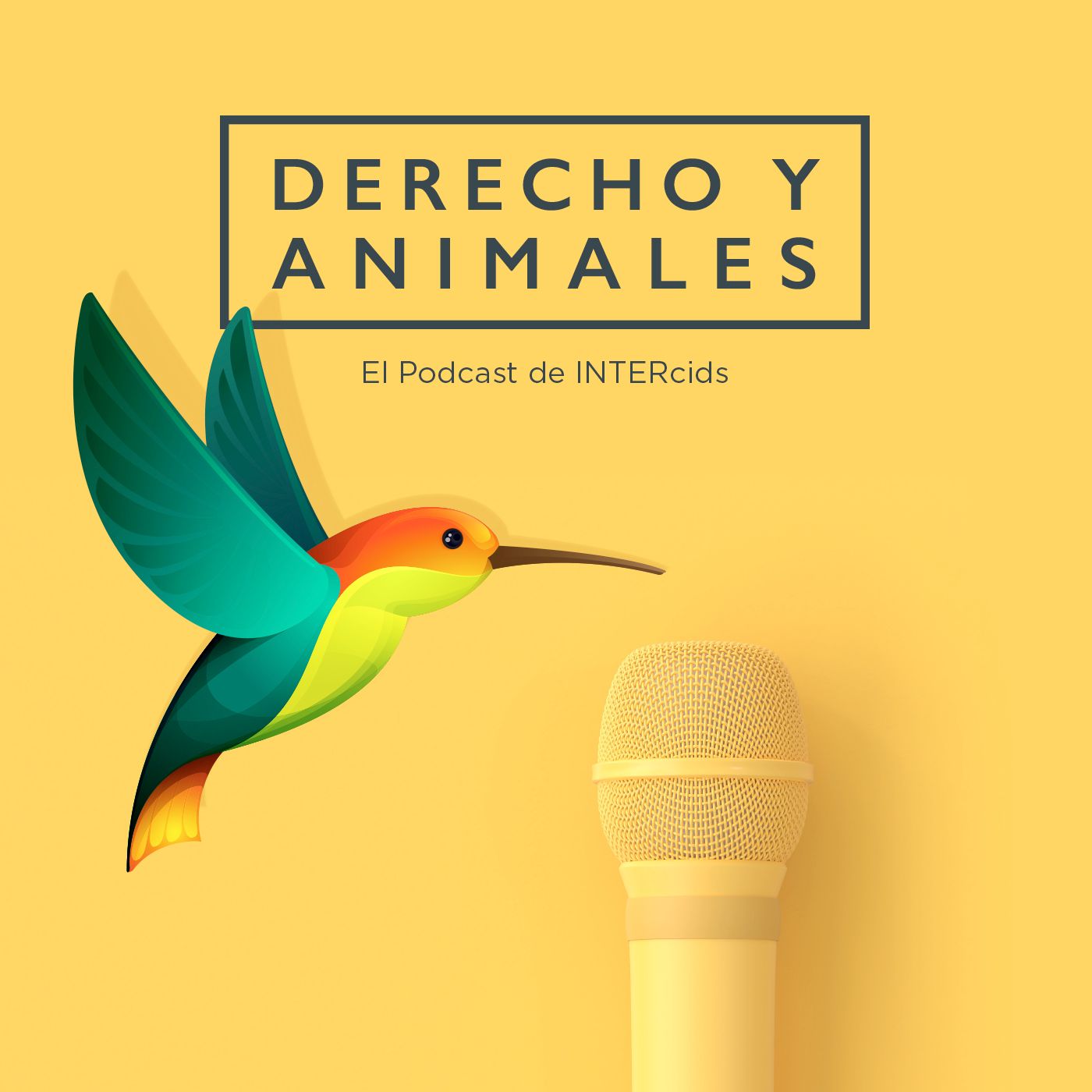
The Animal Turn
Animals are increasingly at the forefront of research questions – Not as shadows to human stories, or as beings we want to understand biologically, or for purely our benefit – but as beings who have histories, stories, and geographies of their own. Each season is set around themes with each episode unpacking a particular animal turn concept and its significance therein. Join Claudia Hirtenfelder as she delves into some of the most important ideas emerging out of this recent turn in scholarship, thinking, and being.
The Animal Turn
S2E5: Intimate Geography with Kathryn Gillespie
Claudia chats with Kathryn Gillespie about the ways in which the geography in general and the concept of intimate geography in particular aid in generating knowledge about animals’ experiences. The concept is both theoretically and methodologically rich allowing for focus not only on animals’ experiences but how researchers’ relations with, proximity to, and understanding of animals’ bodies and lives alters the way we come to know said experience.
Date recorded: 29 September 2020
Kathryn Gillespie is a Postdoctoral Scholar at the University of Kentucky in Geography and the Applied Environmental and Sustainability Studies Program. Her work explores the everyday geographies of violence in which humans and other species are entangled. She is the author of The Cow with Ear Tag #1389 (University of Chicago Press, 2018) and co-editor of Vulnerable Witness (University of California Press, 2019), Critical Animal Geographies (Routledge, 2015), and Economies of Death (Routledge, 2015). She has also published her work in such journals as Hypatia, Gender, Place, and Culture, Animal Studies Journal, Politics and Animals, and Environment and Planning A. Connect with her on her website (http://kathrynagillespie.com/)
Claudia (Towne) Hirtenfelder is the founder and host of The Animal Turn. She is a PhD Candidate in Geography and Planning at Queen’s University and is currently undertaking her own research project looking at the historical relationships between animals (specifically cows) and cities. Contact Claudia via email (towne@live.co.za) or follow her on Twitter (@ClaudiaFTowne).
Featured: The Cow with Ear Tag #1389, Intimacy, animal emotion, and empathy: Multispecies intimacy as slow research practice, and Sexualized violence and the gendered commodification of the animal body in Pacific Northwest US dairy production by Kathryn Gillespie; Apologiaby Barry Lopez; At Rest by Emma Kisiel; Pigs Peace Sanctuary;
Thank you to Animals in Philosophy, Politics, La
A.P.P.L.EAnimals in Politics, Law, and Ethics researches how we live in interspecies societies and polities.
iROAR Network
iROAR brings together podcasts that aim is to make the world a better place for animals.
Disclaimer: This post contains affiliate links. If you make a purchase, I may receive a commission at no extra cost to you.
The Animal Turn is hosted and produced by Claudia Hirtenfelder and is part of the iROAR Network. Learn more on our website.
- Leave a Review on Podchaser
- Check out The Animal Turn Merch.
- Support us on Patreon, Buy Me a Coffee, and Buzzsprout.
Episode notes: S2E5: Intimate Geography with Kathryn Gillespie
00:00 – Introduction
- Kathryn’s route into geography, and animal geography, as a discipline
- María Elena García at The University of Washington (Comparative History of Ideas) as an inspiration
- Interested in animals in agriculture for food production and ‘humane’ slaughter. Studied dairy cows for PhD
- Geography is a broad discipline
09: 40 – Cow with Ear Tag #1389, Auction Yards, and Cull Markets
- Kathryn’s journey in writing The Cow with Ear Tag #1389
- Kathryn explains her way into researching the dairy industry was via auction yards: either the ‘dairy market auction’ or the ‘cull market auction’.
- Dairy market auctions are where cows are bought and sold to remain within the dairy industry as productive capital.
- Cull market auctions are where cows are sold out of the dairy industry when they are no longer considered productive. They are afforded very little time, attributed very little economic value, and abstracted to the point where their individuality, or even their animalness starts to be erased (highlighted by the fact that cows are sold by weight – they are seen as dead meat not living animals).
- The actual cow with Ear Tag #1389 did not sell at auction despite her price being dropped as low as $35. The cow died that evening.
- Animal bodies are exhausted by the way they are treated as commodities and exploited by the agri-industrial complex
14.10 – Intimacy
- There is a difference between recognising animals as individuals and seeing them as part of the agri-industrial complex.
- The ‘mundane’ and the complexity and violence is obscured / hidden in plain sight by the familiarity of practices such as dairy production.
- Feminist studies concepts of making the familiar strange and the personal political are useful here for focusing on the everyday geographies of intimate encounters.
- There can be a spatial element to this – proximity can imply intimacy.
- There can also be bodily intimacy in encounters.
- With Yamini Narayanan at Deakin University, Kathryn has explored different intimate geographies especially in everyday encounters which reveal things which would not otherwise be apparent.
19:50 – The temporality of intimacy
- The temporal aspects of intimacy can be explored through (auto)ethnographic work that extends over an animal’s lifetime.
- For Kathryn, intimacy is a way of knowing animals in research.
- That said, even a fleeting encounter can be intimate because of its intensity rather than its duration.
- Intimacy can develop over time but can also develop due to intensity of emotions.
- How you see your relations with animals is significant and can result in varied reactions
27.30 – Grief and Holding Space
- Kathryn has been considering grief and end of life care in which the idea of ‘holding space’ (i.e., ‘being present for what is’) is used.
- Holding Space by Amy Wright Glenn.
- It is useful to be present and an emotionally attentive witness but also to ‘hold the space’ for what will be some of an animal’s last moments.
- There is significance in being present for animals like The Cow with Ear Tag #1389 in their last moments
- The commodification of cows is so normalised that we can fail to recognise them as living beings, much less as sentient beings with complex social and emotional lives.
- There is a need to be constantly attentive to cows in auctions and vigilant against allowing oneself as an observer to slip in to seeing them in an abstract way.
- For Kathryn such seeing is a form of resistance against the ingrained commodification of animals.
- It is hard to view cows as something other than commodities when it is so normalised.
- “There is something so powerful about the level of commodification, yhe thoroughness of that commodification, and then the abstracting nature of commodification that is really difficult to resist” – Kathryn.
- You have to be constantly vigilant.
32:30 – Researching at a Cull Market
- Kathryn felt she stood out most in the cull market auctions where there were no other women and all the “meat buyers” were older white men.
- She contrasts this with other auctions where there were more people, including families, and where the atmosphere was more ‘jovial’.
- Kathryn ’s presence as a witness was oftentimes unwelcome.
- The simple presence of a researcher as an observer can subvert the space of an auction market and become a form of advocacy.
35:00 – Intimate Geography as a Method
- So is intimate geography a concept or a method?
- For Kathryn, intimate geography can be both a concept and a method.
- When applied as a method one can use autoethnography to explore the intimate geographies of the self in relation to other species.
- Intimate geographies are also a form of ‘slow scholarship’ which intentionally resists the ‘neo liberalisation of the academy’ (e.g., the pressure to publish, churn out research, and to see research as a product rather than a process). In slow scholarship, scholars intentionally slow down and take time to think and read and write.
- Slowing down allows researchers to consider an idea deeply over time.
- But it might still be challenging t achieve such intimacy in historical research but paying attention to to the physiology of animals
43:15 – Bodies and the Intimacy of Production
- Clare Palmer and Constitutive Practices
- Animals bodies are shaped by the power of production which also operates at varied scales. Animals’ actual bodies, their DNA is being altered. This is an intimate intervention.
- Animals are increasingly genetically coded to be better commodity producers. The way their bodies and reproductive processes have changed overtime is astounding.
- The reproductive lives of cows and the interventions into them are highly intimate and exploited.
- Bovine reproduction is denied and the process is exploited for production, for example many cows and bulls never come into contact and are denied an intimacy. This intimacy is denied with cows and calves as well as herds generally.
- Sexualized violence and the gendered commodification of the animal body in Pacific Northwest US dairy production.
49:26 – Quote
- ‘The experience of witnessing animals who’ve been killed on roads is overwhelmingly an experience of bodies, it’s not an experience of encountering a living animal moving through the world on their own journey, the magic of seeing a fox running swiftly and quietly through the foggy night, instead all we can know is what we can witness about the body, a twisted, contorted, bloody figure rendered dead by human movement. Our own bodies too respond, alive, a visceral punch in the gut at the sight, a wave of nausea, disgust mixed with horror mixed with grief. What can we know through attention to a body dead, we are left to wonder. In his breath-taking book Apologia, Barry Lopez asks of animals killed on roads, ‘who are these animals, their lights gone out, what journeys have fallen apart here’. Each time I read Lopez’s words I feel a well of emotion, of grief in his acknowledgement not merely of the fact of the animal dead on the road but in his call to wonder, to care about these animal’s lives and what was lost for them and others with their death. I’m left with more questions, what had the world lost that we didn’t even know it had lost when this animal died, who had these animals left behind, were their kin waiting in the forest somewhere for them to return, or were they looking on, just out of sight beyond the road, watching as their loved one was killed and lay dying or dead in the road. What for instance of a doe, killed on a road in North Dakota, leaving twin fawns on their own who stayed with the body of their mother for four days until her remains were picked up for disposal, what would become of them, those fawns left behind.”
- This leads on to a discussion of animals killed on roads, of Barry Lopez’s Apologia, and of Emma Kisiel’s At Rest
- Memorials are a way of drawing attention to the death of animals on roads. Helping people to stop and thinking about what happens on roads.
58:27 – Class and Pigs Peace
- Kathryn worked with Pigs Peace Sanctuary to develop a course on multispecies ethnography.
- Students spent one full day a week at the Sanctuary spending time with a pig they were paired with. They wrote ethnographies about their relationships and geographies.
- It was a transformative experience for students to have an intimate relationship with a pig.
- Most students thought their paired pig was special, particularly smart or gregarious. But this became a lesson in how the deep emotional lives of animals is not exceptional.
1.02:02 – Internet and Intimate Geographies
- The internet as created opportunities t o be “intimate from afar” – Claudia
- Some farm sanctuaries are using filming to tell the stories of particular animals. Students from all over the place get to know these animals, their lives and social relations.
- It is an intimate educational geography.
- Cameras on wild animals 24/7 raises questions about surveillance.
- Do we watch wild animals and domesticated animals in the same way?
1.04:24 – What are you working on now?
- Kathryn working on a new book the working title is The Sound of Feathers: Haunting and bearing witness in multi species worlds.
- The title comes from thinking about crows based on the relationship Kathryn has with a family of crows which was fostered through food and which has grown into an exchange of gifts / offerings.
- Kathryn feeds the crows and one of the crows has given her a feather.
- The birds often follow her on her dog walks.
- Claudia discusses the tension she feels over the urge to feed wild birds but the concern she has over creating dependency.
- Kathryn counters this by ensuring that she avoids a routine in feeding the crows and also that she doesn’t feed them when the young are learning to forage and find food.
- Find out more about Kathryn’s work on her website KathrynAGillespie.com
Show notes done by Virginia Thomas, fellow with the Animal Turn
Podcasts we love
Check out these other fine podcasts recommended by us, not an algorithm.

The Animal Highlight
Claudia Hirtenfelder
Knowing Animals
Josh Milburn
Species Unite
Species Unite
The Deal With Animals with Marika S. Bell
Marika S. Bell
The Other Animals
Laurent Levy
Beyond Species
Beyond Species
The Anthrozoology Podcast
Anthrozoology Podcast
Freedom of Species
The Freedom of Species Team
Our Hen House: Vegan & Animal Rights Movement | Stories from the Frontlines of Animal Liberation
Jasmin Singer and Mariann Sullivan
Derecho y Animales
Derecho y Animales
Storytelling Animals
Dayton Martindale
Species
mackenmurphy.org
Animal Law Matters
K & R Animal Law
The Humanimal Connection
Humanimal Trust
The Animal That Changed You
Katya Lidsky
Think Like a Vegan
Emilia Leese
The Shifting Lens: Viewing the Animal Experience
Tiamat Warda Rebecca Madrid
The Salmon People
Canada's National Observer
Comme un poisson dans l'eau
Victor Duran-Le Peuch

